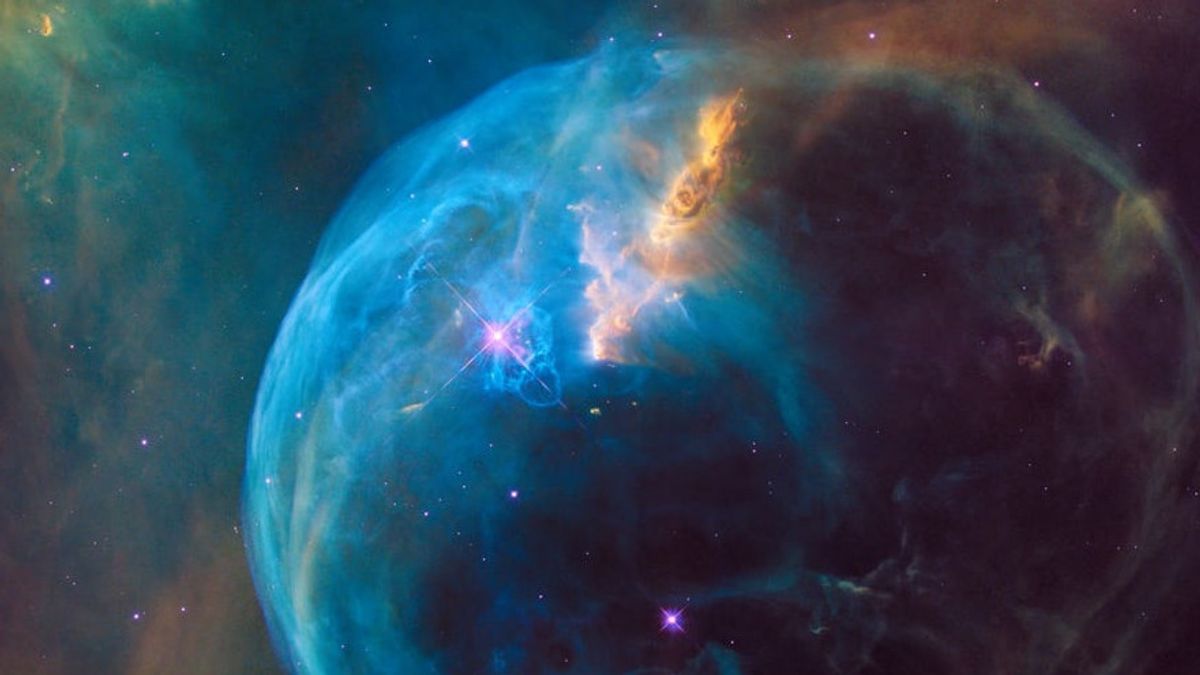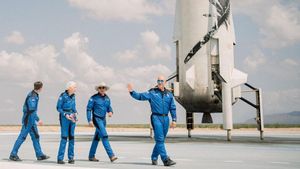JAKARTA - Astronomers from the University of Queensland, Brisbane, Australia have discovered stars that unexpectedly explode radio waves, possibly signaling the existence of hidden planets.
They searched for planets using the world's most powerful radio telescope Low-Frequency Array (LOFAR) located in the Netherlands, up to 165 light-years away. This research is the result of an international collaboration that includes astronomers from the Dutch national observatory ASTRON where Dr. Joseph Callingham as lead author and fellow astronomer Dr. Benjamin Pope.
"We have found signals from 19 far red dwarf stars, four of which are best explained by the presence of planets orbiting them. "We have known for a long time that the planets in our Solar System emit strong radio waves when their magnetic fields interact with the solar wind, but radio signals from planets outside our Solar System have not been detected," Pope said.
Compiled from Science Daily, Tuesday, October 12, Pope asserted, this discovery is an important step for radio astronomy and has the potential to lead to the discovery of planets throughout the galaxy. There are millions of exoplanets outside our Solar System that could host aliens. Civilizations for billions of years may have had their ups and downs, even before the Earth was formed.
Previously, astronomers were only able to detect nearby stars in stable radio emission, and everything else in the radio sky was interstellar gas or exotica like black holes.
Now, radio astronomers can see plain old stars when they make observations, and with that information, they can search for planets that orbit those stars. The observations are based on signals collected by more than 70.000 antennas across Europe, including the UK.
Further, astronomers will focus on red dwarfs, which are much smaller than the Sun and known to have a strong magnetic activity that drives stellar flares and radio emissions. But some old, magnetically inactive stars have also emerged, challenging conventional understanding.
Meanwhile, Callingham said that astronomers believe this signal comes from the magnetic connections of stars and planets orbiting invisible, similar to interactions between Jupiter and its moon, Io.
“Our own Earth has auroras, commonly known here as the northern and southern lights, which also emit strong radio waves. This comes from the interaction of the planet's magnetic field with the solar wind," Callingham said.
But according to Callingham, in the case of Jupiter's aurorae, they are much more powerful because its volcanic moon Io blasts material out into space, filling Jupiter's surroundings with particles that propel the aurora very powerfully.
“Our model for radio emission from our stars is an upgraded version of Jupiter and Io, with a planet enveloped in the stellar magnetic field, feeding material into the massive current that also powers the bright aurora. It's a spectacle that has caught our attention from light years away," Callingham said.
As such, astronomers now want to confirm that the proposed planet does exist, and the researchers now plan to confirm their findings in the journal Nature Astronomy.
"We can't be 100 percent sure that the four stars we think have planets are indeed planetary hosts, but we can say that planet-stellar interactions are the best explanation for what we're seeing," Pope said.
SEE ALSO:
Pope explained that follow-up observations have ruled out planets that are more massive than Earth, but there's no telling that smaller planets won't do this. The discovery with LOFAR is only the beginning, but the telescope only has the capacity to monitor relatively close stars, within 165 light-years of Earth.
With the Australian radio telescope and South Africa's Square Kilometer Array under construction, expected to be activated by 2029, researchers predict they will be able to see hundreds of relevant stars at greater distances. In doing so, this work shows that radio astronomy is on the cusp of revolutionizing our understanding of the planets outside the Solar System.
The English, Chinese, Japanese, Arabic, and French versions are automatically generated by the AI. So there may still be inaccuracies in translating, please always see Indonesian as our main language. (system supported by DigitalSiber.id)


















